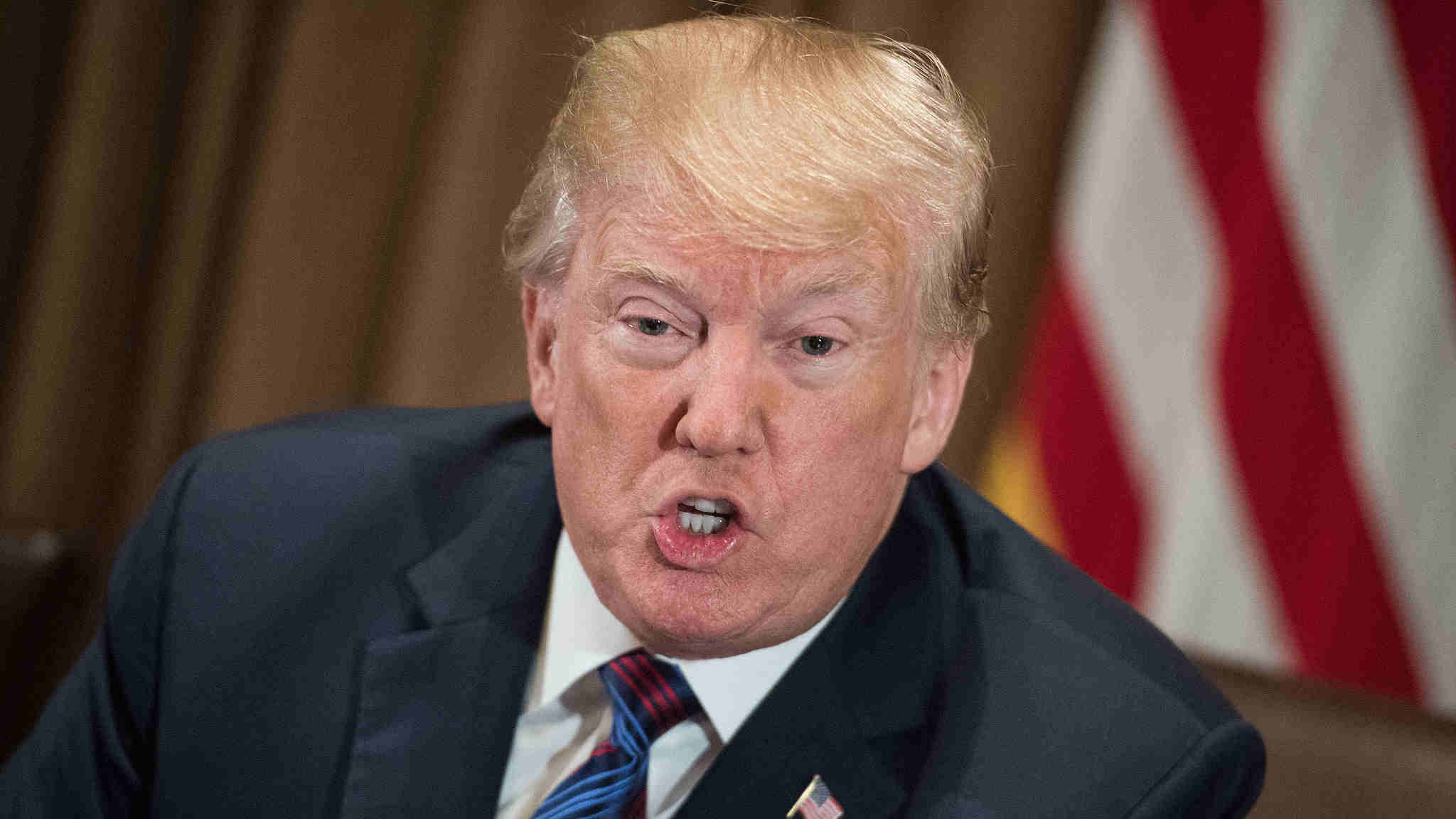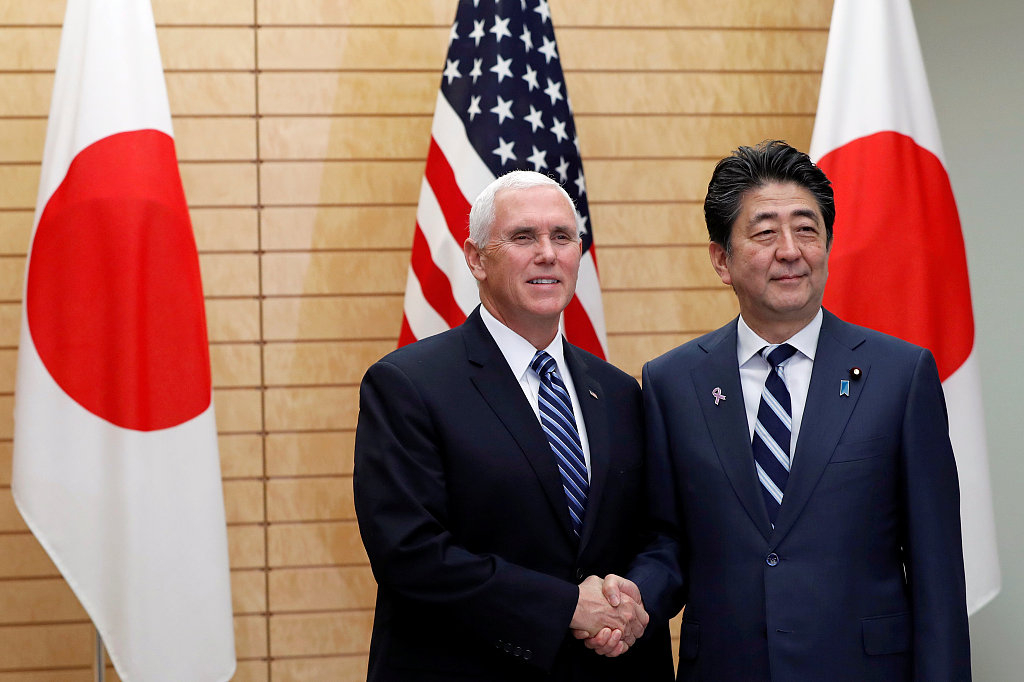

Editor's note: Ken Moak taught economic theory, public policy and globalization at the university level for 33 years. He co-authored a book titled "China's Economic Rise and Its Global Impact" in 2015. The article reflects the author's opinions, and not necessarily the views of CGTN.
That U.S. President Donald Trump changed Asia-Pacific to Indo-Pacific was meant to revive the Quadrilateral Security Dialogue (Quad) first proposed by Japanese Prime Minister Shinzo Abe to counter China’s rise in 2007. It was put on “hiatus” when Kevin Rudd became Australian prime minister between 2007 and 2010.
However, the Quad was revived at the 2017 Association of Southeast Asian Nations (ASEAN) Summit by the leaders – U.S.' Donald Trump, India’s Narendra Modi, Japan’s Shinzo Abe and Australia’s Malcolm Turnbull – to curb China’s “ambitions” in the South China Sea.
Since then, geopolitical situations appeared to have changed, with India, Australia and Japan seeking rapprochement with China instead of containing it, which could sink the U.S. “Indo-Pacific” strategy.
In a recent meeting between Japanese Prime Minister Abe and Chinese President Xi Jinping at the Osaka G20 Summit, the two leaders agreed to take the China-Japan relationship to a higher level. Abe even invited Xi to visit Japan next spring.
India might realize that siding with the U.S. is not in its national interest. Forging a closer economic relationship with China (and Russia) could spur its development. China, for example, is in a position to invest in India’s infrastructure, which are now woefully inadequate to attract foreign investment and, in part, preventing Modi’s “Made in India” industrial policy from realizing its goals.

Acting U.S. Secretary of Defense Patrick Shanahan speaks at the IISS Shangri-La Dialogue summit in Singapore, June 1, 2019. /VCG Photo
Moreover, India cannot be comfortable being a U.S. ally, not after its removal from special trade status and having tariffs on over 5.5 billion U.S. dollars of Indian goods imposed on it. To add “salt to injury,” Trump also demanded that India remove its tit-for-tat tariffs ahead of a meeting between the two leaders on the sidelines of the Osaka G20 Summit. India could be forgiven for questioning the reliability and stability of its relationship with America.
Australia, though a staunch U.S. ally, is refusing to take sides between the two powers probably because China is its largest trade partner and source of international students and tourists. Indeed, Australia spoke against the U.S.-initiated trade war against China because it is hurting its exports and economy. Furthermore, its prime minister stated recently that Australia wants good relations with both powers and will not choose sides.
It seems that the 19th century British statesman, Lord Palmerston, might be correct in saying countries have no permanent allies or foes, only national interests.
Siding with the U.S. can harm national interests
Japan and other U.S. allies will attest that being a U.S. ally is costly and dangerous, having to pay billions of U.S. dollars each year supporting American troops in their territories and buying expensive weapons. Japan has bought hundreds of U.S. billions of dollars of U.S. arms since the 1950s, according to the Stockholm International Peace Research Institute (SIPRI). It also “contributed” around 13 billion U.S. dollars to help the U.S. invasion of Iraq, according to a Reuters report in 2015.

U.S. Vice President Mike Pence shakes hands with Japanese Prime Minister Shinzo Abe at Abe’s official residence in Tokyo, Japan, November 13, 2018. /VCG Photo
Furthermore, allying with the U.S. but severing ties with China could seriously harm Japan’s economy. The island country sells between 18 percent and 20 percent of its exports to China each year. In addition, large Japanese enterprises invested heavily in China because of its increasingly affluent market and Japan’s declining population.
Australia is similarly dependent on China for its socio-economic wellbeing, with China accounting for 20 percent of the country’s imports and being the biggest source of international students and tourists. Former prime minister Tony Abbot correctly observed that the Asian economic powerhouse is the reason for Australia’s “lucky continent” label. Allying with the U.S. against China would be its biggest policy blunder.
India might not be as reliant on China as Japan and Australia, but distancing itself from the U.S. could improve resource allocation efficiency and receiving huge investments from China. Instead of using scarce funds for military buildup, India could spend the money on education, healthcare, infrastructure and poverty eradication. Joining the China’s Belt and Road Initiative would increase Chinese investment in India’s infrastructures and industries, accelerating the country’s development.
There is thus every reason for Japan, India and Australia to walk away from the U.S. “Indo-Pacific” strategy, particularly when “the Chinese aggressions or threats” were created by questionable information.
(If you want to contribute and have specific expertise, contact us at opinions@cgtn.com.)

Copyright © 2018 CGTN. Beijing ICP prepared NO.16065310-3
Copyright © 2018 CGTN. Beijing ICP prepared NO.16065310-3